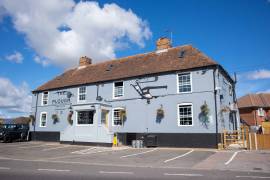Guinness to end UK brewing
by John Harrington Diageo has cited "over capacity" as the prime reason for closing its Park Royal brewery spelling the end of producing Guinness in Britain for almost 70 years. The company has announced plans to shut the famous west London brewery by summer 2005 at a cost of about 90 jobs. Production of Guinness for the UK and Ireland will be transferred to the St James's Gate brewery in Dublin. The closure of Park Royal will be accompanied by an investment of at least £15m in the Dublin site, which should increase capacity from around eight million to 12 million kegs annually. Sales of Guinness in the UK have dipped recently down 3% for the last half of 2003 compared to the previous year. But Diageo spokesman Paul Flanagan said the Park Royal closure was a "capacity issue", and not linked to the recent performance of the brand. "The prime reason to move came after a detailed review of our brewing network which showed we could do all the brewing at St James's Gate. "There's been a dip in sales in the past few months but across the past few years Guinness has been out-performing the beer market as a whole. "The hot summer and mild autumn last year didn't help, but our new campaigns for this year, with new adverts and activities around the Six Nations Rugby, means we expect to soon see growth." Diageo said it would still maintain a "significant presence" at the 80-acre Park Royal site, which houses more than 1,000 people in sales and marketing. Park Royal, which opened in 1936, produces Guinness in draught only for the British market. The politics behind the history Plans for Guinness to brew in England were first announced in 1913. The original site for the English Guinness brewery was in Old Trafford, Manchester, and production was due to start in 1917. The outbreak of the First World War halted work on that scheme. However, in 1932 a trade war began between the now-independent Irish Free State and the United Kingdom, and Guinness was told by the British Government that unless it opened a brewery in England, the UK would impose a duty on beer imports from Ireland. It was decided the new brewery should be in the London area, and Guinness looked at 20 or more sites from Tilbury in Essex to Slough. It almost chose to build at Twickenham, close to the rugby ground, before deciding on the old Royal Agricultural Society showground at Park Royal in west London. The venture was undertaken in the greatest secrecy, which led to speculation on what the buildings going up from November 1933 were actually for. One rumour was that it was going to make explosives from potatoes; another that it was a poison gas plant.














